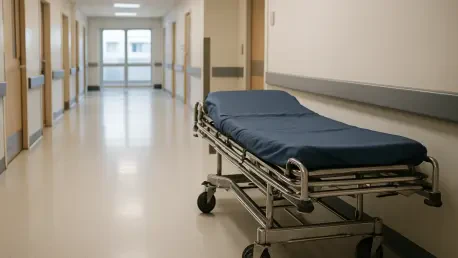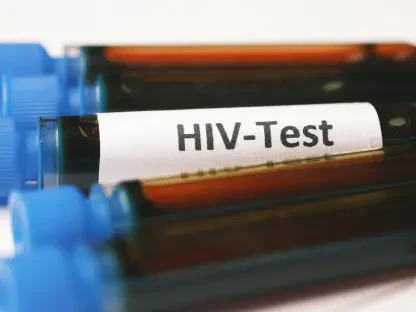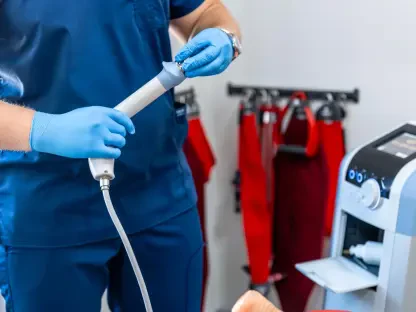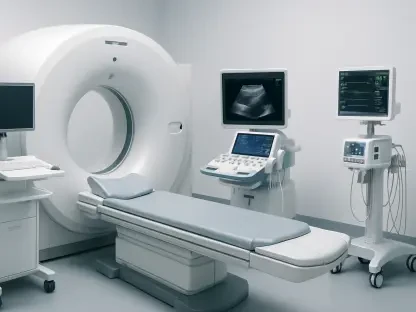What happens when a government shutdown, meant to be a temporary hiccup, becomes a weapon for slashing over 1,000 jobs at a critical health agency, leaving federal workers and policymakers stunned? In a shocking move, the Trump administration issued dismissal notices to a staggering number of Department of Health and Human Services (HHS) employees amidst a funding deadlock this October. This isn’t just a pause in operations—it’s a permanent cut, targeting essential staff at a time when public health systems are already under strain. The shockwaves of this decision ripple far beyond Washington, touching the lives of countless Americans reliant on these services.
The significance of this story lies in its unprecedented nature and the potential consequences for national healthcare infrastructure. Unlike typical shutdowns where furloughs are temporary, these layoffs—initially affecting 1,100 to 1,200 workers, many at the Centers for Disease Control and Prevention (CDC)—signal a deliberate push to reshape federal agencies. With political battles over Affordable Care Act subsidies fueling the stalemate, the human cost and operational risks of such a drastic measure demand close scrutiny. This is not merely a budget dispute; it’s a pivotal moment that could redefine how government services are managed during crises.
The Shutdown That Turned Into a Slash
Government shutdowns have long been a frustrating reality of political gridlock, but they’ve rarely been a backdrop for permanent job cuts. Historically, federal employees face furloughs—unpaid leave with the promise of returning once funding is restored. However, the current administration broke from tradition by issuing reduction-in-force (RIF) notices to a significant portion of HHS staff, a decision that caught many off guard during an already tense funding lapse.
This action follows a pattern of workforce reductions at HHS, with thousands of positions already eliminated earlier this year through a separate RIF. Compounded by the furlough of 32,000 workers during the ongoing shutdown, the department is stretched thinner than ever. The targeted layoffs, initially numbering over 1,100, hit hardest at the CDC, an agency central to public health preparedness, raising immediate concerns about the nation’s ability to respond to emergencies.
The political context adds another layer of complexity. The administration has tied these cuts to a broader narrative of reducing government size, specifically targeting roles deemed non-essential amid a standoff over healthcare funding. For employees receiving termination notices in the middle of a shutdown, the message is clear: their jobs are pawns in a larger ideological chess game.
Political Motives Behind the Cuts
At the heart of these layoffs lies a calculated strategy, as articulated by administration officials. HHS spokesman Andrew Nixon described the terminations as a direct response to what he called a “Democrat-led government shutdown,” framing the cuts as an opportunity to dismantle a “bloated bureaucracy.” This rhetoric aligns with the Trump administration’s “Make America Healthy Again” agenda, which prioritizes streamlining federal operations by eliminating positions seen as redundant or contrary to policy goals.
The scale of the layoffs initially appeared sweeping, with 1,100 to 1,200 employees across HHS divisions receiving notices. However, a system error led to the reinstatement of roughly 700 CDC workers on October 12, leaving approximately 600 still facing termination, according to the American Federation of Government Employees. This partial reversal suggests internal disarray, undermining claims of a precise, intentional restructuring effort.
Critics argue that the political motivations overshadow practical governance. The timing of these cuts, amid a deadlock over healthcare subsidies, hints at an attempt to pressure opponents by leveraging essential services as bargaining chips. The risk, however, is a lasting erosion of public trust in the government’s commitment to health and safety during turbulent times.
Voices From the Frontlines
The human toll of these layoffs reverberates through the words of those directly impacted and the leaders fighting on their behalf. Senator Patty Murray (D-Wash.) issued a scathing critique, declaring that a shutdown should not be exploited to “permanently weaken basic services or create chaos by recklessly firing and rehiring essential workers.” Her statement reflects a growing unease among lawmakers about the long-term damage to federal capabilities.
Unions representing federal employees have taken the battle to court, challenging the legality of using a shutdown as a pretext for RIFs. Their lawsuits underscore a fundamental question: does the administration have the authority to enact permanent cuts under these circumstances? The outcome of these legal challenges could set a precedent for how future shutdowns are handled in relation to workforce decisions.
An anonymous HHS insider revealed a chaotic internal process, noting that the partial reinstatement of CDC staff was a desperate attempt to “fix a massive oversight.” This glimpse behind the curtain suggests that the layoffs were not as meticulously planned as official statements imply, adding fuel to the argument that ideological zeal may have outpaced logistical readiness. The clash of perspectives—between defenders of the cuts and those decrying their recklessness—paints a picture of a deeply divided response to a profound crisis.
The Ripple Effects on Public Health
Beyond the immediate impact on employees, the operational strain on HHS poses a dire threat to public health services. With thousands of staff already lost to prior cuts and tens of thousands furloughed during the shutdown, the department’s capacity to deliver critical programs hangs in the balance. The permanent loss of even 600 workers could delay responses to outbreaks, hinder research, and disrupt healthcare access for vulnerable populations.
Consider the CDC, a cornerstone of national disease prevention, which bore the brunt of the initial layoffs. Even with partial reinstatements, the agency’s reduced workforce may struggle to maintain surveillance systems or coordinate emergency responses. At a time when public health challenges demand robust federal support, these cuts risk creating gaps that could take years to mend.
The broader implication is a potential shift in how Americans perceive government reliability. If essential services falter due to staffing shortages, confidence in federal institutions could wane, leaving communities to fend for themselves or turn to overburdened local resources. This scenario underscores the high stakes of decisions made in the heat of political conflict.
Navigating the Path Forward
For those alarmed by the instability at HHS, several steps can help address the fallout and prevent further erosion of vital services. Staying updated on legal challenges to the layoffs is crucial, as court rulings could redefine the boundaries of executive power during shutdowns. Following credible news outlets for the latest developments ensures access to accurate information amid a rapidly evolving situation.
Advocacy plays a powerful role in demanding accountability. Reaching out to elected officials to press for transparency on how layoff decisions are made—and their impact on public health programs—can influence policy outcomes. Public pressure often serves as a catalyst for protective measures or reversals of harmful actions.
Supporting affected workers through union-led relief efforts or amplifying their stories highlights the personal cost of these cuts. Additionally, for individuals dependent on HHS-managed services, identifying alternative community resources or contingency plans can mitigate disruptions. These actions collectively offer a way to engage with a crisis that intertwines policy, politics, and people’s livelihoods, ensuring that the public remains an active participant in shaping the resolution.
Looking back, the mass layoffs at HHS during the government shutdown stood as a stark reminder of how political battles could jeopardize essential services. The unprecedented move to permanently cut over 1,000 jobs, even with some reinstatements, exposed vulnerabilities in federal health infrastructure at a critical juncture. Moving forward, the focus shifted to actionable solutions: strengthening legal protections for federal workers, ensuring transparency in workforce decisions, and rebuilding capacity at agencies like the CDC. The lessons from this episode emphasized the need for policies that prioritize stability over ideology, safeguarding public health against the whims of political deadlock.









